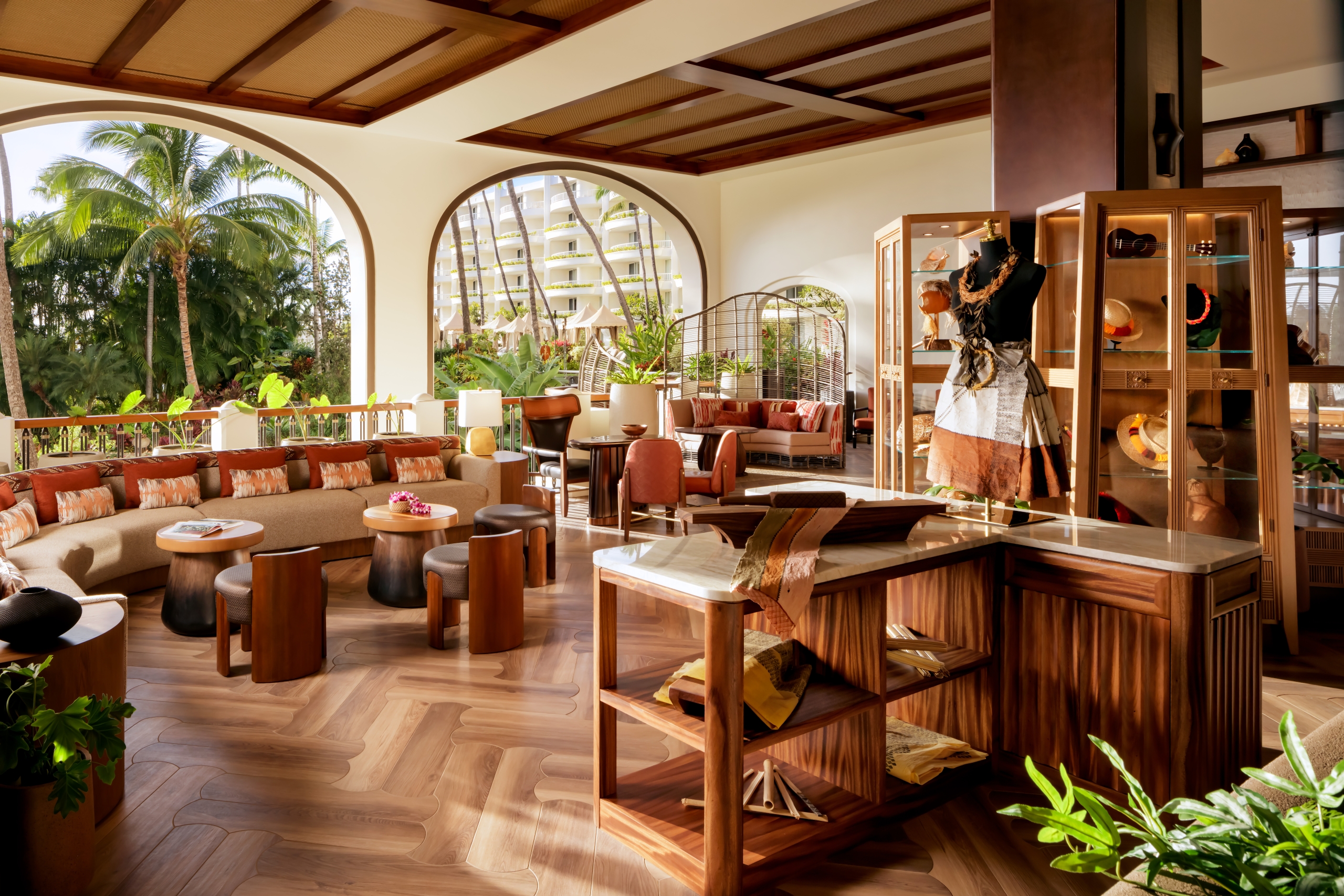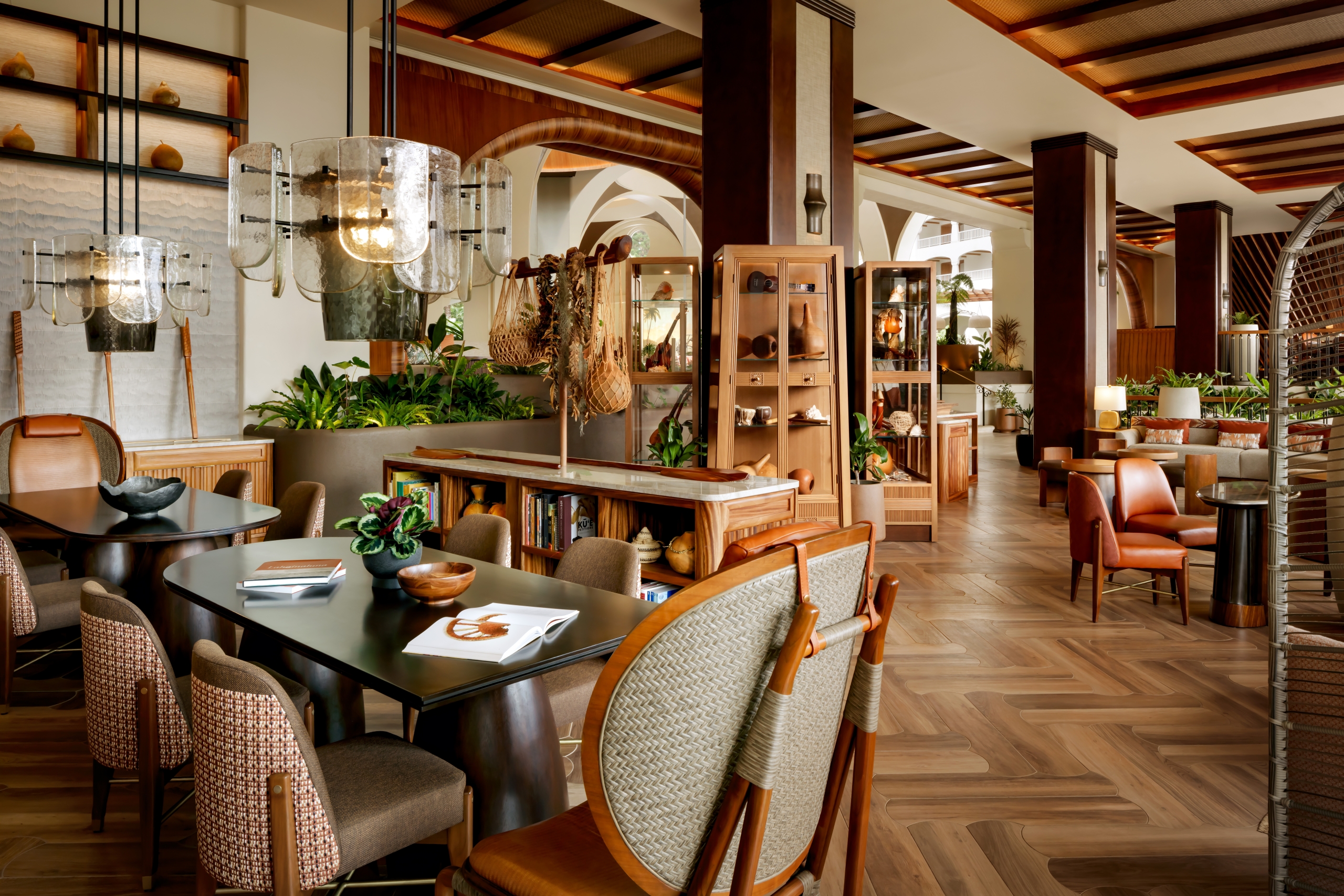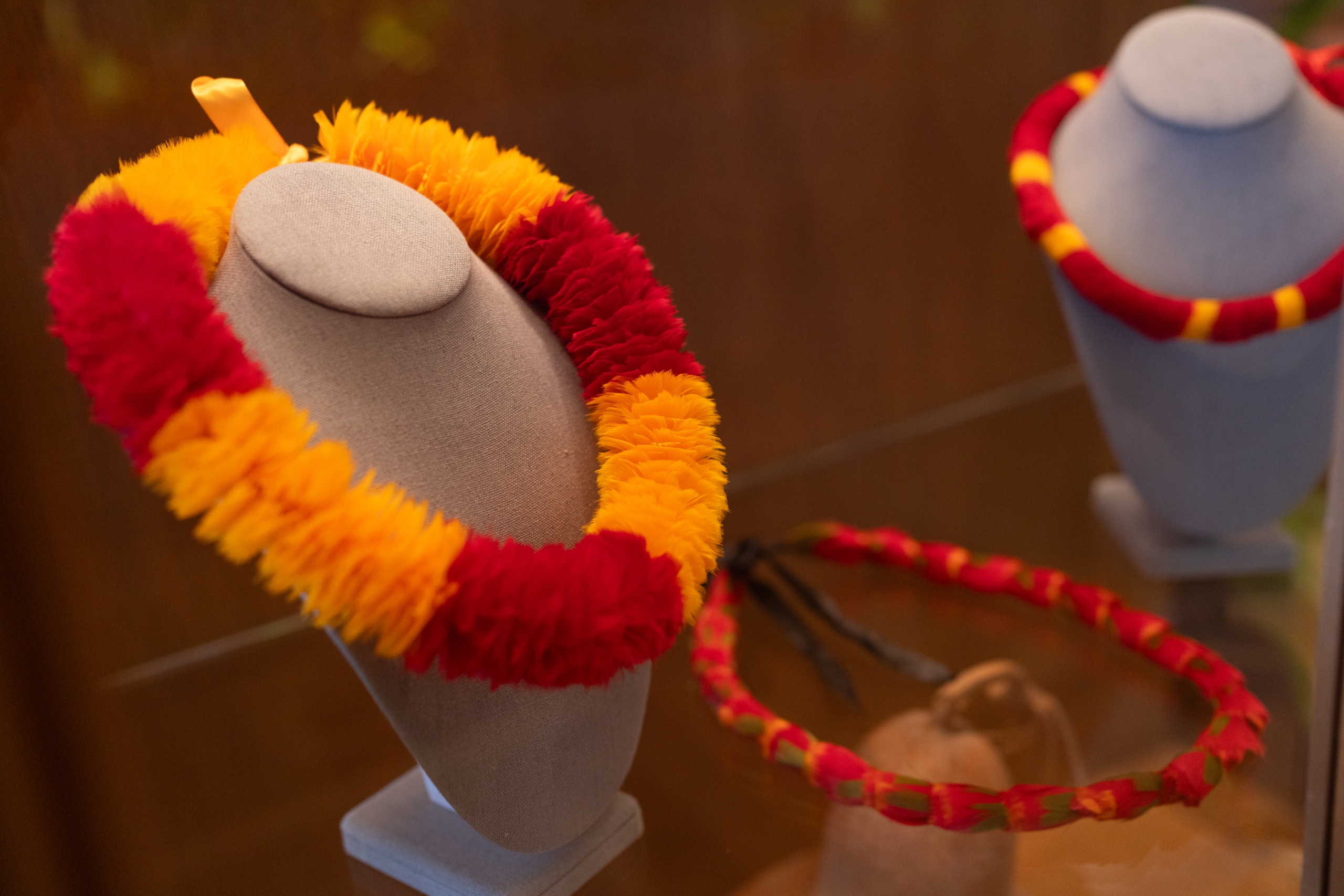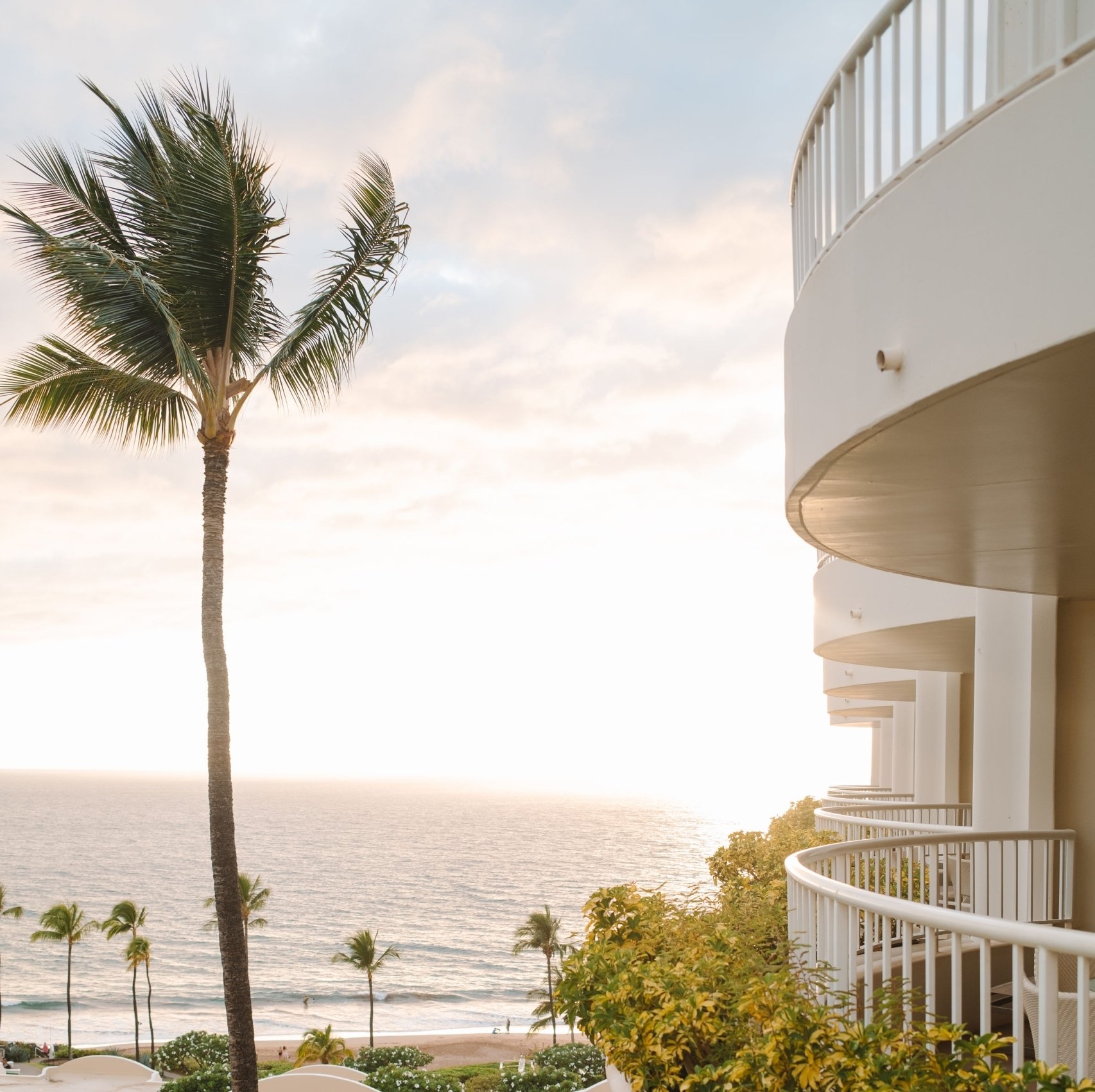
Hale Kukuna
Opened in late 2023, Fairmont Kea Lani’s immersive Hawaiian cultural center, can be found at the forefront of the resort’s newly transformed lobby, acting as the piko (center) of the property.
The expansive, open-air cultural center is meant to permeate Hawaiian culture, traditions, and values from within and is open to all who seek to create respectful and meaningful connections to Hawaiʻi.

"House of Enlightenment"
Hale Kukuna, a name conceptualized by Fairmont Kea Lani’s cultural advisory board and lineal descendants of Palauea, the area upon which the resort rests, denotes a house of enlightenment. The name honors “kukuna”, meaning rays of the sun, and the nourishment that it brings to the ʻāina and all living things in Hawaiʻi.
“Our vision and intention for Hale Kukuna is to serve as a space for both poʻe hoʻokipa and malihini to create meaningful connections with the culture, history, and spirit of this place –
and in doing so, develop a deeper respect for this ʻāina and place we call home.”





